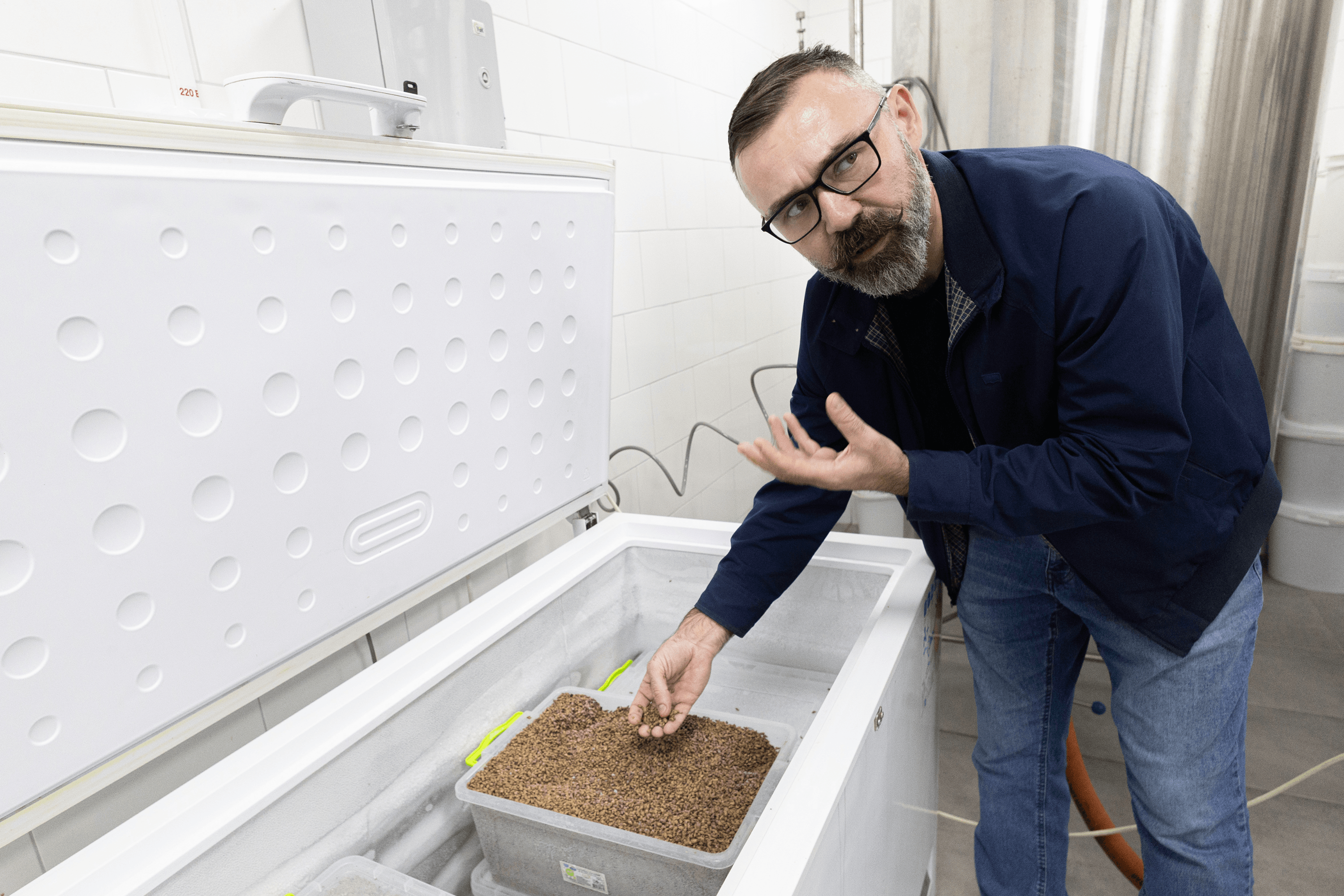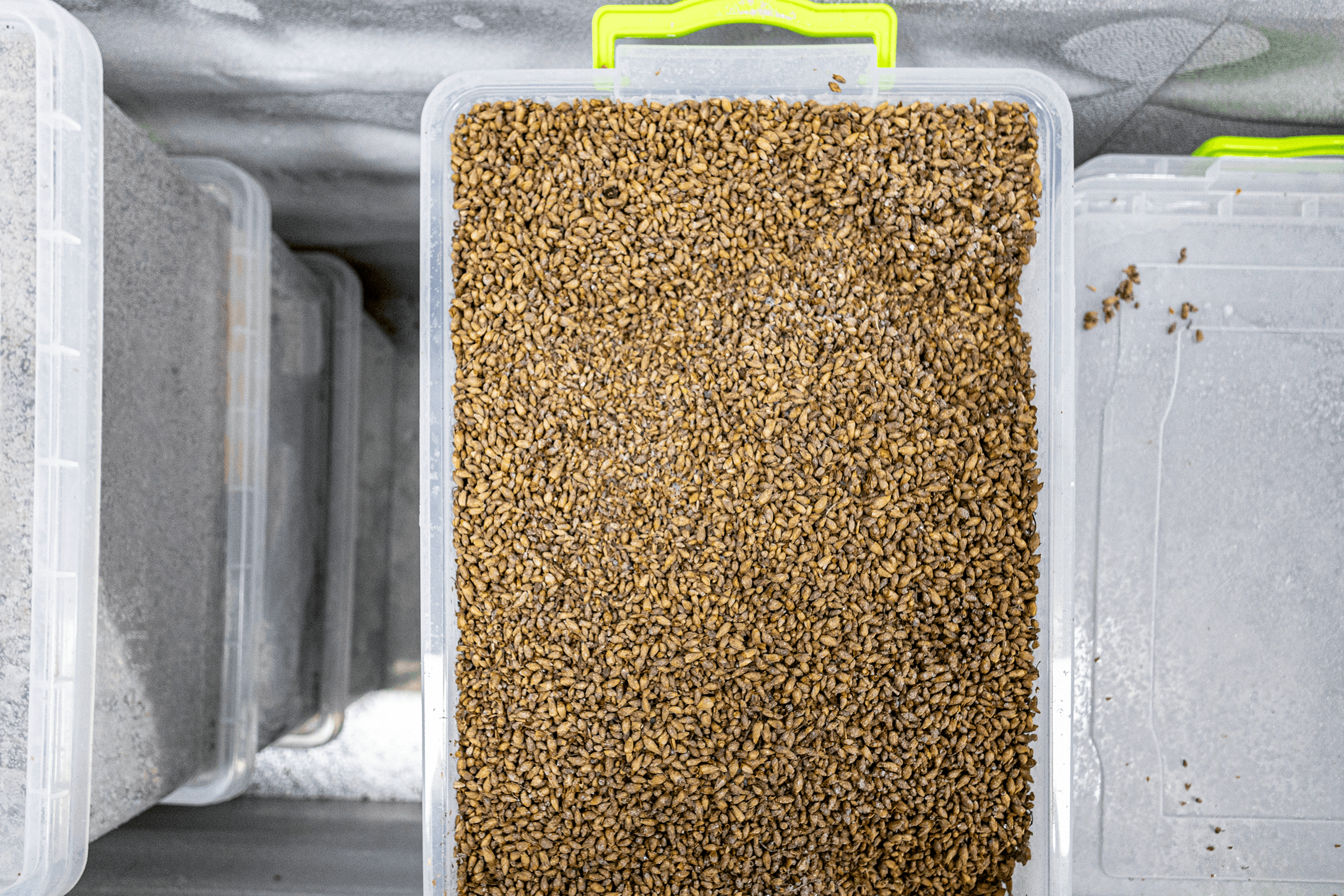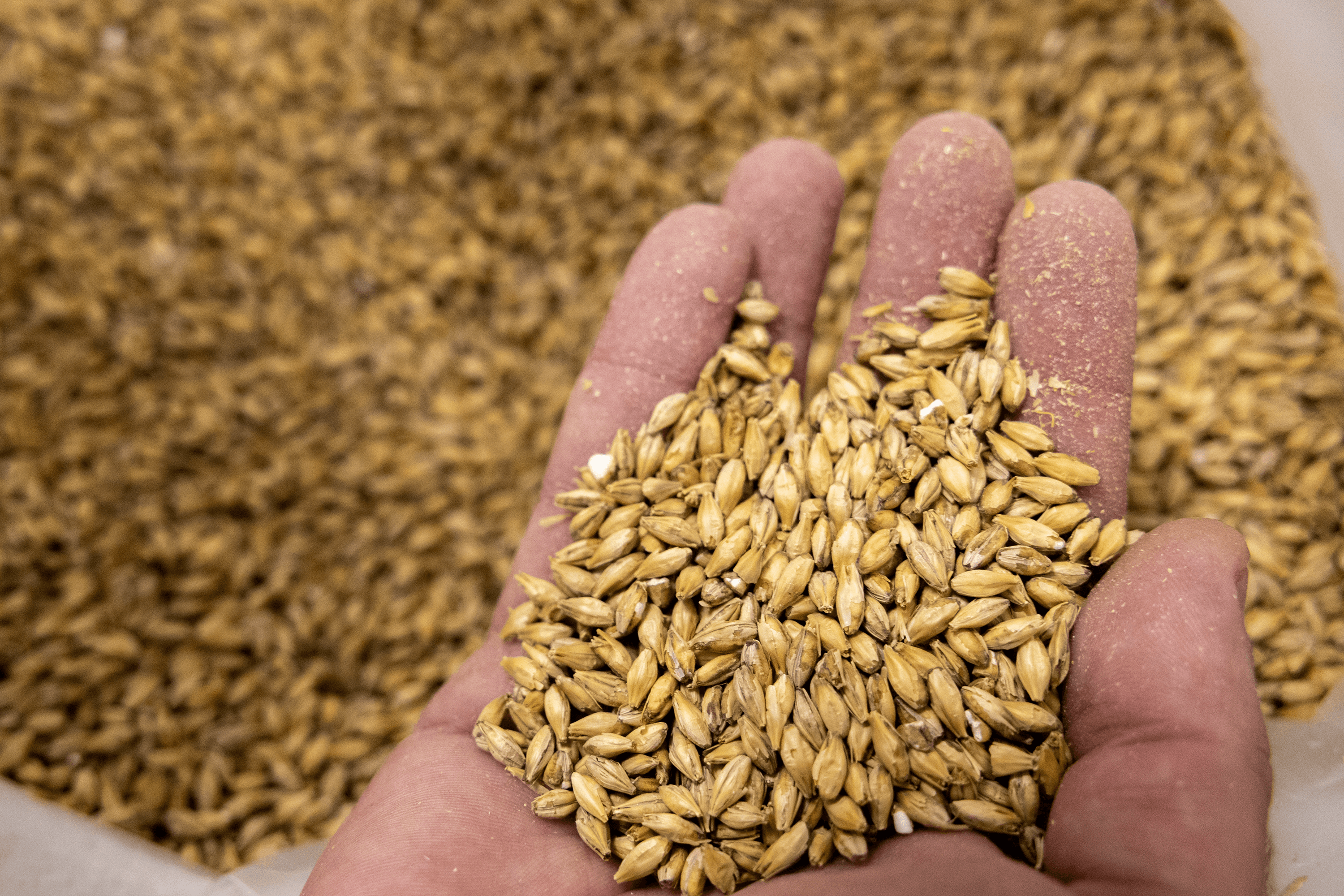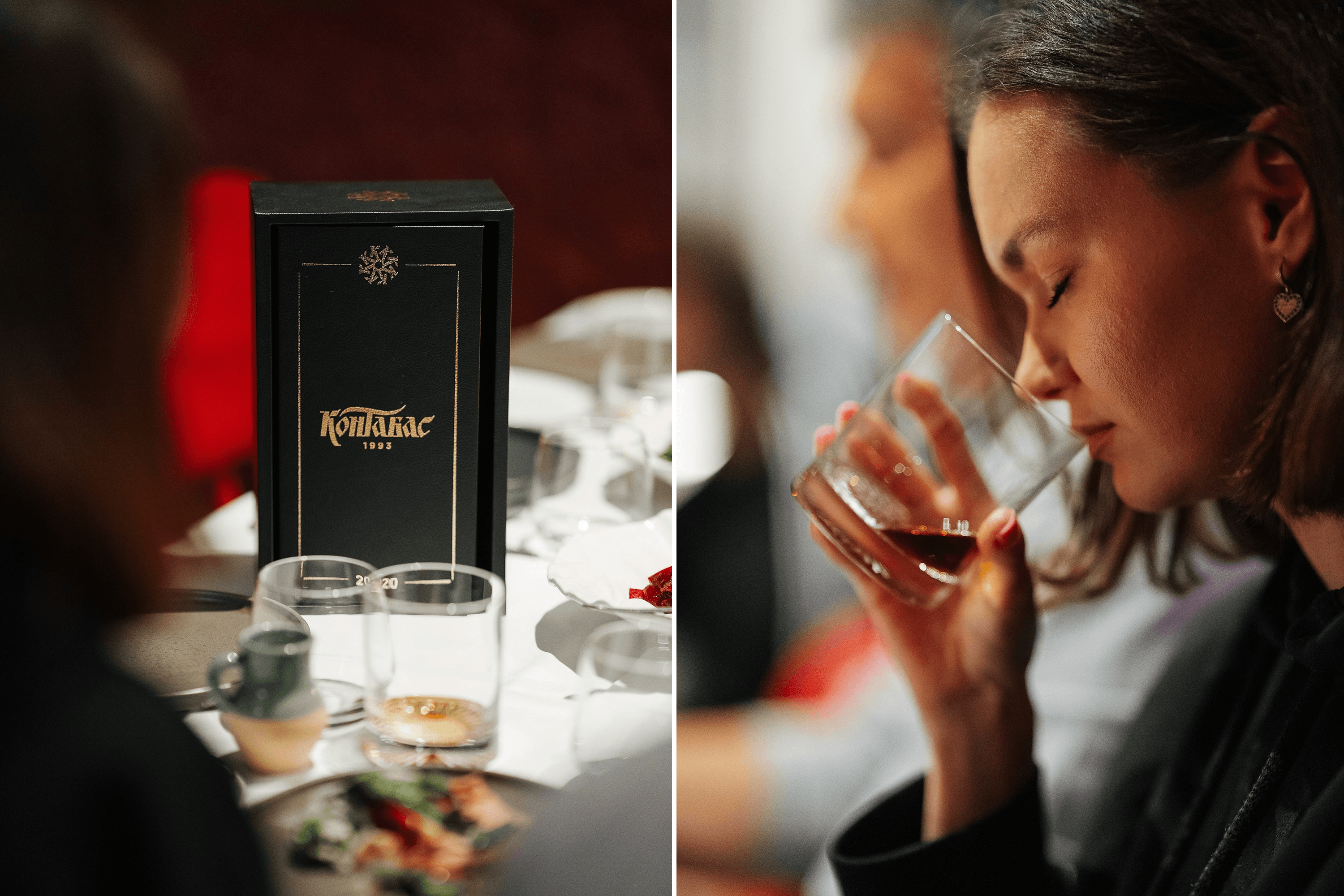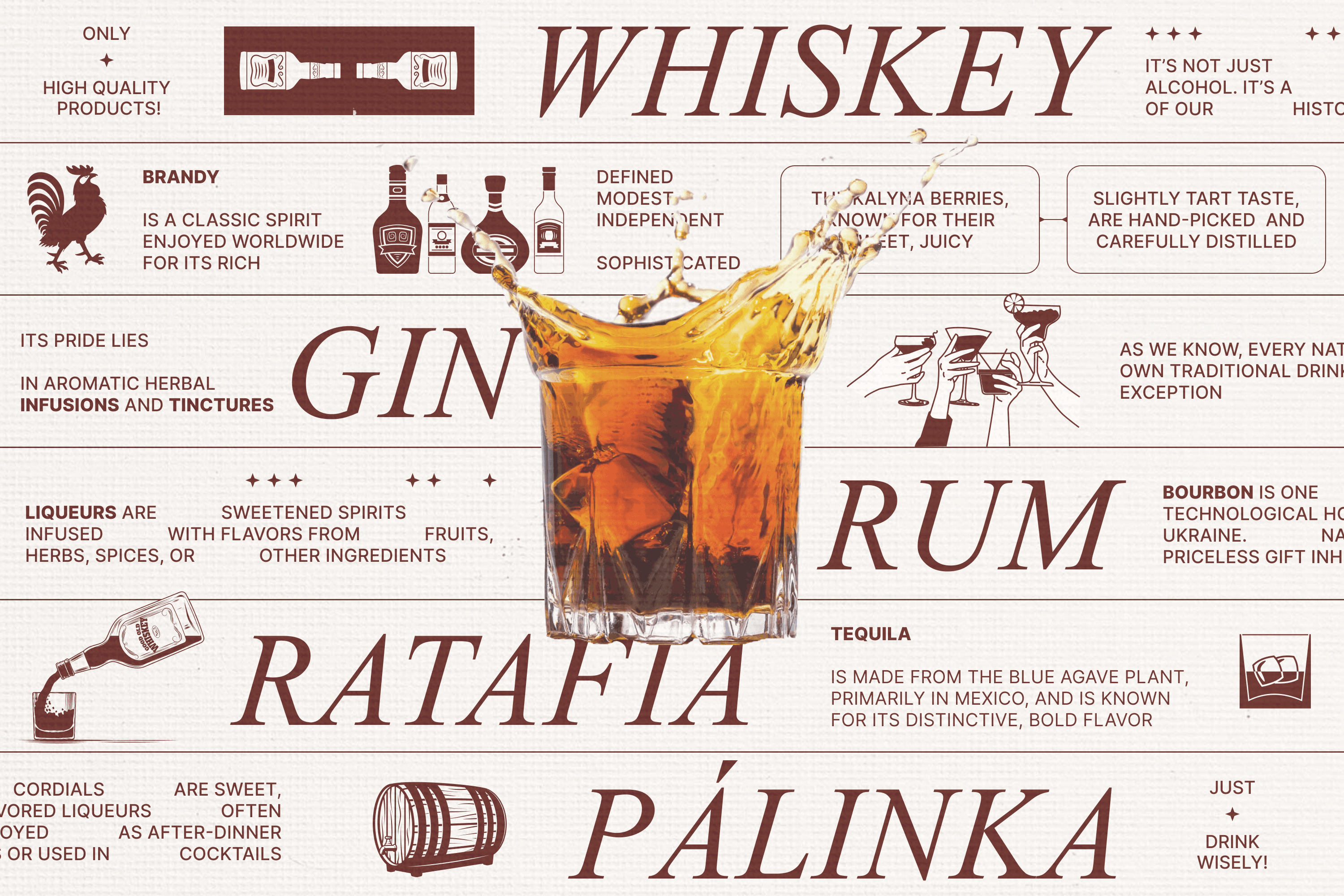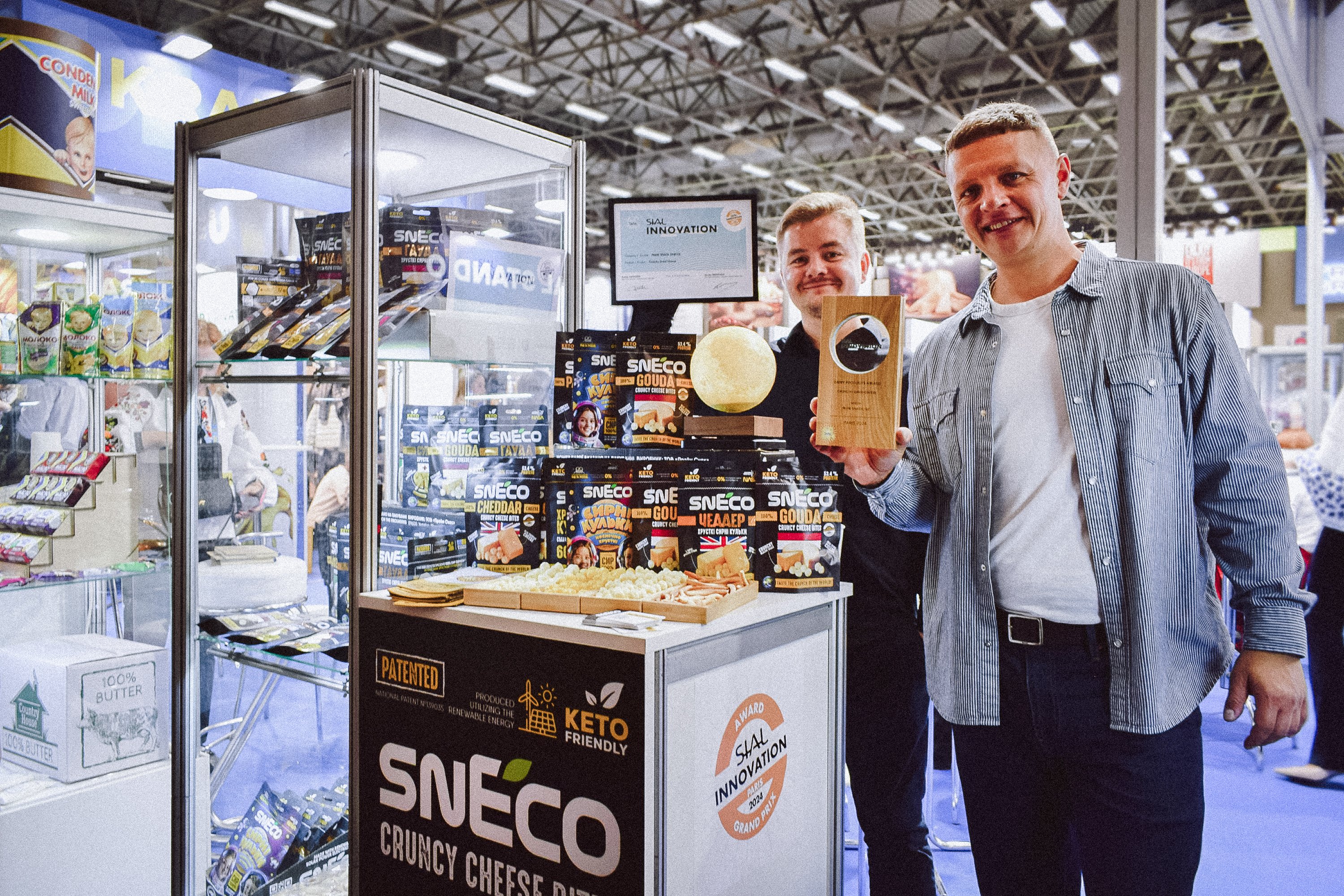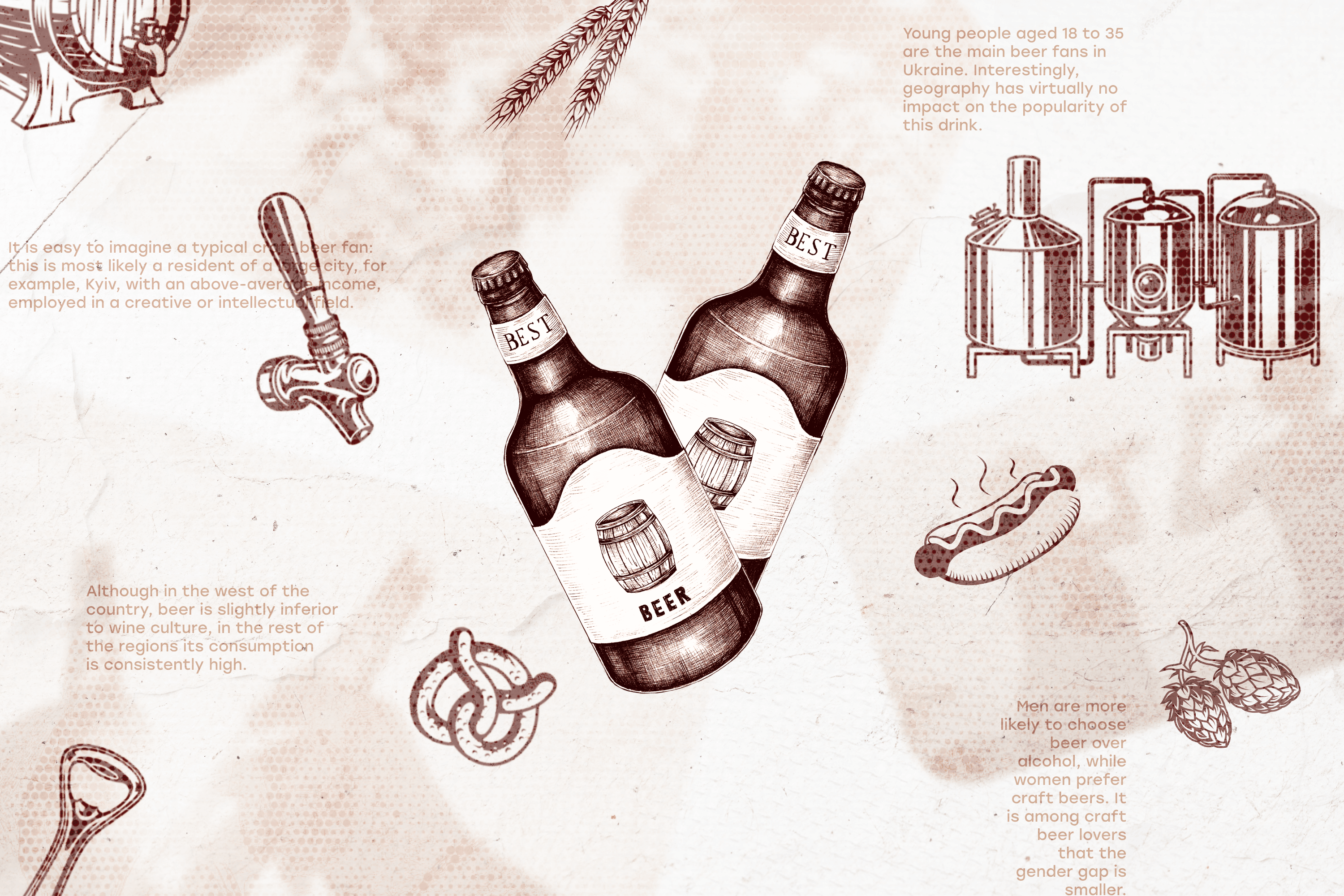Roman Pelekh had a business in Transcarpathia with his brother: they would buy inexpensive houses, repair them, and resell them. In 2018, in the basement of one of these houses, they found a notebook with ancient recipes and 90 liters of kontabas—a strong alcoholic beverage infusions with blackcurrant buds. It was produced in Ukraine during the 18th and 19th centuries.
The taste and history of kontabas impressed Pelekh so much that he decided to revive the drink. In January 2022, he released the first 300 bottles under the Kontapel brand. But a month later, Russia’s full-scale invasion of Ukraine began, and production had to be halted—Roman joined the Armed Forces of Ukraine. He returned to kontabas in 2023. Now, the beverage is sold in over 60 countries worldwide, and a container with the first 7,500 bottles will soon be shipped to the United States.
In an interview with YBBP journalist Artem Moskalenko, Pelekh spoke about the revival of kontabas, its prospects in the American market, the search for exporters, and participation in international exhibitions.
Roman, how did you create the Kontapel brand, and why did you decide to revive the kontabas beverage?
My brother and I are from Transcarpathia. We had a business there: buying old houses in the mountains, restoring them, and selling them for a higher price. In 2018, in the basement of one such house, we found 90 liters of an unknown beverage and a notebook with decades-old recipes. From the notes, we learned it was kontabas, bottled back in 1993—likely the oldest samples of it not just in Ukraine, but in the world.
We tried the drink—and, surprisingly, it was delicious, certainly no worse than a good cognac or whiskey. I had something to compare it to: for several years I worked at the Hennessy distribution company in Ukraine, attended tastings, and have a good understanding of elite alcohol. So, I immediately understood: kontabas is something unique. I became fired up with the idea of showing it to the world and proving that Ukraine has its own beverage with a history.

Following the recipes from the notebook, my brother and I made the first batch of our own kontabas at home—about 400 bottles. Each contained 30% authentic kontabas and 70% of our fresh batch. We agreed that if we managed to sell the entire batch to friends and acquaintances, we would launch production. A bottle cost ₴3800. That is quite expensive, but it was the price that would allow us to believe in the drink’s profitability. We weren’t sure if people would actually buy it, but we sold everything. And most importantly—we received wildly positive feedback.
And you launched production right away?
No, from 2018 to 2020, we mostly experimented. Kontabas turned out to be a very difficult beverage: sediment often formed at the bottom of the bottle. This did not affect the taste, but it looked unattractive. To sell the bottles in stores and restaurants, we still needed to work on the technology. Through trial and error, we managed to fix this.
A separate problem was where to get currant buds, the main ingredient of kontabas. Almost no one sells them. I tried growing currant bushes myself, but nothing came of it. Then I started looking for farmers via Facebook groups of local communities. I posted ads saying I would buy a liter of buds for ₴500. But no one responded—so I raised the price to ₴1000. Then things started moving, and we managed to establish a supply of buds.
Two years of experiments before launching production is a long time. What did you live on during that period?
Until 2022, I had a recruiting agency that helped Ukrainians find employment abroad. I had studied in the Czech Republic and then worked there, so I knew how it’s done and organized such a business. This agency brought in income and required almost none of my involvement. So I had time for kontabas, but I perceived it as a hobby. I thought it would take 10–20 years to popularize the drink, and I certainly wasn’t counting on a profitable business right then.
And yet, in 2020, you opened your first production facility. What was that like?
By that time, my brother had stepped away from the business, and I started making kontabas with my wife. We found our perfect recipe, secured the bud supply, and, most importantly, confirmed there was demand for kontabas. Next, I rented the premises of an old Soviet cafeteria on Magnitogorska Street in Kyiv. It seemed like great luck—it met all state standards for alcohol production. For example, it had a special floor slope for drainage and a separate sewage system. But, unfortunately, it didn’t work out. Tax officers arrived in expensive cars, started applying pressure and hinting at “gratuities.” I didn’t want to pay bribes; for me, it was a matter of principle.
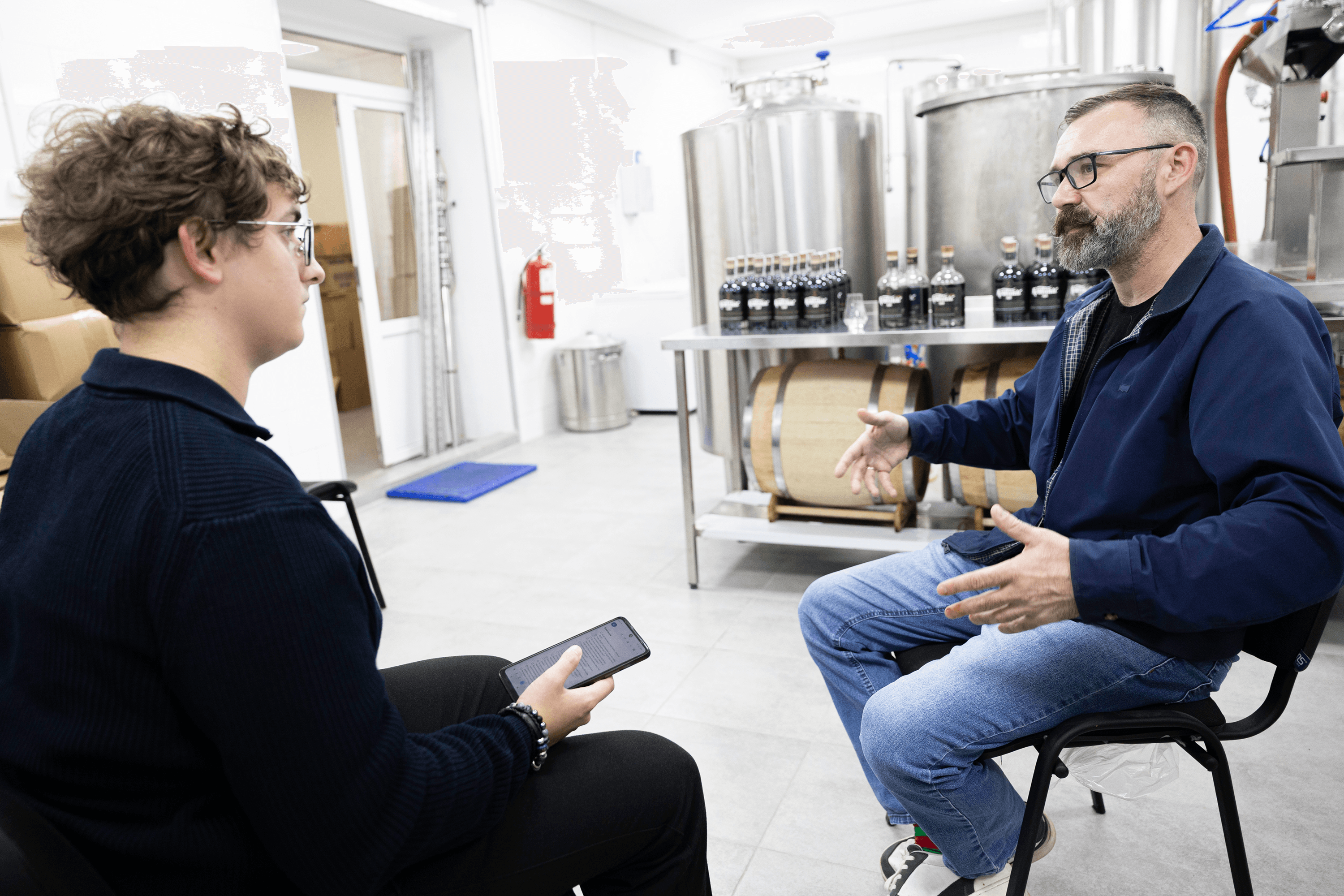
Then I rented a licensed workshop [for alcohol production] from the “Zlatogor” company. In January 2022, we received the full package of permits and launched production. We managed to produce the first 300 bottles and make a delivery to one Kyiv restaurant and one store. In February, the full-scale war began. I went to fight, and the project had to be put on hold.
Can you tell us about your military service?
At the beginning of the invasion, I took my family from Kyiv to Uzhhorod. I returned and volunteered for the 206th Battalion. After training, we were sent to the Mykolaiv region. There, someone uncovered our positions, and we immediately came under fire from “Uragans,” but I survived. In Mykolaiv, I underwent additional training as a mortar operator, after which we were sent directly to the front line. First to the third line of defense, then the second, and finally—the first one.
I spent about a month on the front line. Then we were hit by “Grads”—many were wounded, I suffered a severe concussion and went to Kyiv for treatment. While recovering, I kept thinking: why was I not killed then? Probably because I have to set the kontabas business up finally. At the end of 2022, I was discharged from service due to family circumstances, and my wife and I began to restore production.
Did you return to the rented workshop, or did you start all over again?
The old contacts were gone—some had gone to fight, others had left. I didn’t even know where to get bottles and corks. So, we established new connections and looked for premises.
In mid-2023, parliament passed a law on small distillate producers—it created a special license for makers like us, which costs not ₴500,000 a year, [like a regular one, ] but only ₴30,000. The law came into effect at the end of 2023, which is when we applied for the license. But it turned out to be quite a quest. The tax office constantly returned the application due to some trifles; we redid everything several times. We only received the license in mid-2024. And we waited another two months for excise stamps—you can only order them when you have a license. By the fall of 2024, we started working—shipping products to restaurants, stores, and partners.
How did you find them?
When I returned from army service, I found 5-6 restaurants that I thought would be interested in working with us. I went to them and gave a presentation, explaining what kontabas is. They liked it. At the same time, the media began to write about our drink, and it gained popularity. Now, it’s mostly potential partners coming to us, not the other way around.
How much did you invest in the new production?
About ₴3 million. This was from the beginning of 2023 until the summer of 2024, when we received the license. Most of the money went to purchasing equipment, but we also had to maintain the non-operational premises [pay rent and utilities] while we waited for permits.
Who are your current customers in Ukraine?
We receive the most orders—85–90%-- via our website. There are three main categories of buyers there. The first buys kontabas as a gift; the second supports everything Ukrainian and expresses patriotism this way. And the third is people who simply love delicious drinks. They tried it somewhere, liked it, and decided to buy a bottle for themselves.
We are also present in specialized alcoholic beverage chains—OkWine, Winetime, WineVine, VinoVino, Vino.ua. Grocery supermarket chains are not taking us yet: they don’t believe our product will sell because it’s too expensive—$45-75 per bottle. Although, in one liquor store, we can sell 70 bottles a month.
Our kontabas can also be tasted in some Ukrainian cuisine restaurants.
Do you have customers abroad?
Yes, back in 2024, we started selling kontabas abroad. Our exporter waited for about six months while we obtained our license to start cooperation. It’s an Austrian company that ships products all over the world. They have already sent kontabas to over 66 countries.

How did you find this exporter?
He himself found us. He read the story of kontabas somewhere, tried it—and decided it was a worthy drink that should be shown to the world. And he contacted us.
Which countries are ordering the most right now?
I cannot say for sure because the exporter handles that. We send him a large batch of the drink worth €8,000–9,000, and he ships it out himself, one or several bottles at a time, to different countries. We have already had three such batches. It seems to me we ship the most to the United States, followed by Canada, and then European countries: Poland, Germany, and so on. There were orders from Asia and even South America, but those are isolated cases.
What surprised me the most was an order from Japan. A bottle of kontabas cost about €60, and shipping there was another €150-200. And the person was still willing to pay that money just to try our drink.
Are there difficulties with shipping alcoholic beverages to different countries?
Yes, the restrictions are quite challenging. But, fortunately, the exporter handles all shipping issues. He has a license that allows him to send alcohol by mail worldwide. However, it’s no more than two bottles per shipment. But you can just send two packages.

If we talk about the size of your company in monetary terms—what is your current turnover?
Since we only received our license at the end of 2024, last year the amounts were small. But this year, the turnover will be over ₴20 million. Next year, we plan to reach ₴200 million—by increasing exports.
How do you plan to increase exports so much?
We want to set up wholesale distribution of kontabas in the United States. We’ve already held talks with an American exporter and are currently processing the documents necessary to start cooperation. This is a fairly large exporter with its own network of distributors. It currently operates in 20 states and wants to cover all 50 within the next three years. Each state has different laws, so the system is complex.
How did you meet this exporter?
By chance. My wife follows many Ukrainian brands on social media, and one of them posted one day: “Hooray, we found an American exporter.” The post included the company’s name. It turned out that it is also a veteran-owned company. It was founded by two American war veterans and one Ukrainian, whom I wrote to. We quickly found common ground and began arranging cooperation.
What documents are needed to export alcohol to the United States?
Our American exporter handles these issues; I don’t get into the details. He sends me forms, and I fill them out.
What volumes of kontabas do you plan to export to the States with this partner?
We want to send kontabas there by container load. One container is 30,000 bottles. We want to start with a quarter of a container, about 7,500 bottles per month—any less doesn’t make sense because shipping is quite expensive. From there, we will expand, hire people, and try to reach larger scales.
How many bottles per month do you produce now?
1,000 bottles on average, but it depends on the season. Last December, we made about 3,000 bottles because there was demand.
How much investment is needed to increase production 7-fold?
Our production is currently operating at no more than 20% of its capacity—because there aren’t that many orders. We can reach a production of at least 8,000 bottles per month without serious additional investments, just by adding 2–3 people to the team. Right now, we only have 10 people working—that includes production and managing. We don’t have enough hands to apply labels, move barrels and bottles. So, we’ll increase our staff and production capacity in the near future.
If we produce more than 8,000 bottles per month, we will need to buy new barrels, equipment, and partially automate the process. We haven’t calculated how much this will cost because we don’t need it yet. If necessary, we can use working capital or turn to the investor who bought 10% of the company.
He’s an old friend of mine—from the Maidan times. After we resumed production, he contacted me and asked if he could become our partner. He is captivated by the story of kontabas and how we are reviving this drink.
How do you plan to make kontabas more popular in the United States market?
We plan to enter it with the help of bloggers on TikTok and Instagram, alcoholic beverage sommeliers, as well as via tastings, alcohol events, and competitions. In October, we went to the Bar Convent Berlin exhibition; there were many distributors and influential people from the United States there. Distributors from Germany, Poland, Lithuania, Moldova, and Romania were also interested in kontabas. But our priority is the United States.
We are currently working on a major article about kontabas for one of the three most authoritative alcohol magazines in the world—Wine Enthusiast.

But we cannot launch a promotional campaign until the beverage is physically in the States. If interest suddenly explodes, and there is no opportunity to buy kontabas—this could cause negativity and spoil our path into the United States and Canada. So, until we prepare all the documents and make the first shipment, we are not starting [the promotion].
You said you recently went to Berlin. Was that your first exhibition?
The first one this large.In Ukraine we participated in several ones, but the experience wasn’t very successful. So we decided to only go to foreign ones from now on.
We already participated in a tasting competition in San Francisco—it’s the largest event of its type. And we immediately won a silver medal, which is practically impossible. Usually, you have to participate for two or three years in a row just to get noticed.
Did the silver medal affect sales?
From what I’ve been told, it doesn’t work that way. If you just received an award and disappeared, it gives you nothing. A potential customer needs to see you several times to remember you and understand that the product is worthy of attention and available for purchase. Therefore, this is not work for months, but for two or three years—to achieve at least a stable interest in us.
Do you plan to change the beverage’s recipe for the American market?
No, the recipe will be exactly the same. The only thing is that the United States has very strict requirements for the appearance of the drink. It must look the same in all bottles. Our color can vary slightly. Therefore, for export, we will add a special caramel that has no smell or taste. Many producers do this so that the drink in all bottles from the same batch is the same color.
How does the United States market differ from the Ukrainian one?
It’s a completely different system there. In the United States, there are clearly divided links: exporter, distributor, store—and only then the end buyer. In Ukraine, for example, the same “Silpo” can be both a distributor and a seller at the same time. You cannot do that in the US. So in the States, it’s important that the demand for the product comes “from below,” from consumers. In Ukraine, the demand may come not from customers, but from the supermarket chains themselves.
Why did you choose the United States market specifically?
It’s interesting to us for several reasons. First, it’s stable. Second, it’s huge. And third, the price: if in Ukraine a bottle for ₴1900 seems expensive, for Americans, $45–$75 is a completely normal average price for a quality drink.
Furthermore, there is a large Ukrainian diaspora in the United States—not only those who left during the full-scale war but also descendants of Ukrainians who emigrated after the Second World War or even earlier. I think they are the ones who can help create the initial demand for our drink. After that, our main goal is for Americans to like kontabas and perceive it as a quality, interesting beverage with its own character and history.


